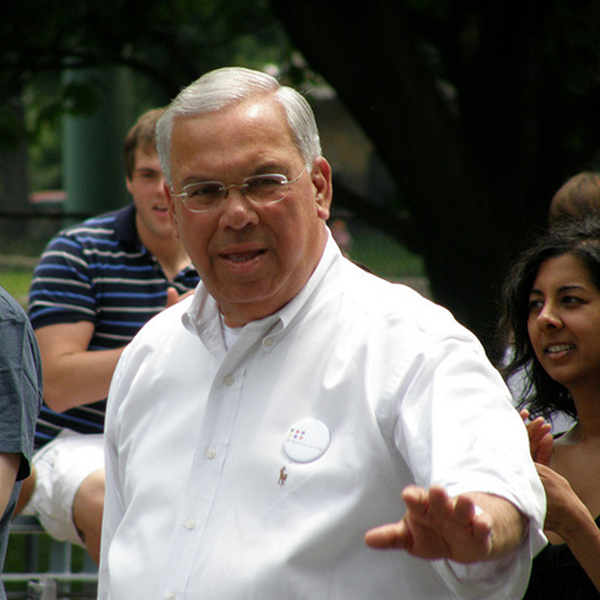Mayor Menino's Compression Fracture Still a Problem
 Photo by Dan4th via Flickr
Photo by Dan4th via Flickr
In a press conference Tuesday, Mayor Tom Menino’s doctors at Brigham and Women’s Hospital announced that he is suffering from acute, worsening back pain that is keeping him hospitalized. For almost three weeks, Menino has been at Brigham and Women’s recovering from an acute viral infection and a blood clot that required his early return from a vacation in Italy. But during his stay in the hospital, he suffered a small compression fracture.
The Globe reported on Wednesday that:
Mayor Thomas M. Menino suffered another setback and will remain hospitalized indefinitely as doctors try to determine what caused a fresh surge of pain in his ailing back. Speaking Tuesday at a press conference, two of Menino’s physicians said they could not give any estimate when the mayor might be released from Brigham and Women’s Hospital, where he was admitted almost three weeks ago.
How do you get a compression fracture from lying in bed? Dr. Chadi Tannoury, an orthopedic surgeon at Boston Medical Center treats a wide spectrum of spinal pathologies and says that a compression fracture is a compression or a wedging deformity of the anterior part of the bony spine, also known as the vertebral body. “In older individuals with poor bone stock or soft bone compression, [a compression fracture] may happen even with trivial falls and activities, like laying down in bed and torquing the trunk, or sitting up forcefully may contribute to compression of very soft vertebrae.”
Tannoury says that by definition a compression fracture denotes a relatively stable spine and that in most patients with good bone stock, like younger and mid-age patients, a compression fracture typically happens only after a fall or significant traumatic event, and may not need extensive treatment. But in some older folks, and depending on the amount of compression and the pain symptoms, kyphoplasty, which is cementing in the collapsing vertebrae, may be helpful, Tannoury says. According the the Mayo Clinic, kyphoplasty offers the potential to restore bone height in the vertebra and reverse deformity of the spine.
“He was getting better, then recently [he experienced] more pain and that has been responsible for the holdup,” Dr. Dale Adler, of Brigham and Women’s Hospital said at Tuesday’s press conference. “All the other problems [the blood clot and infection] are taken care of. Now the focus is why his back is hurting him more. There are a plethora of theories, and that’s what we’re going to work on.”

